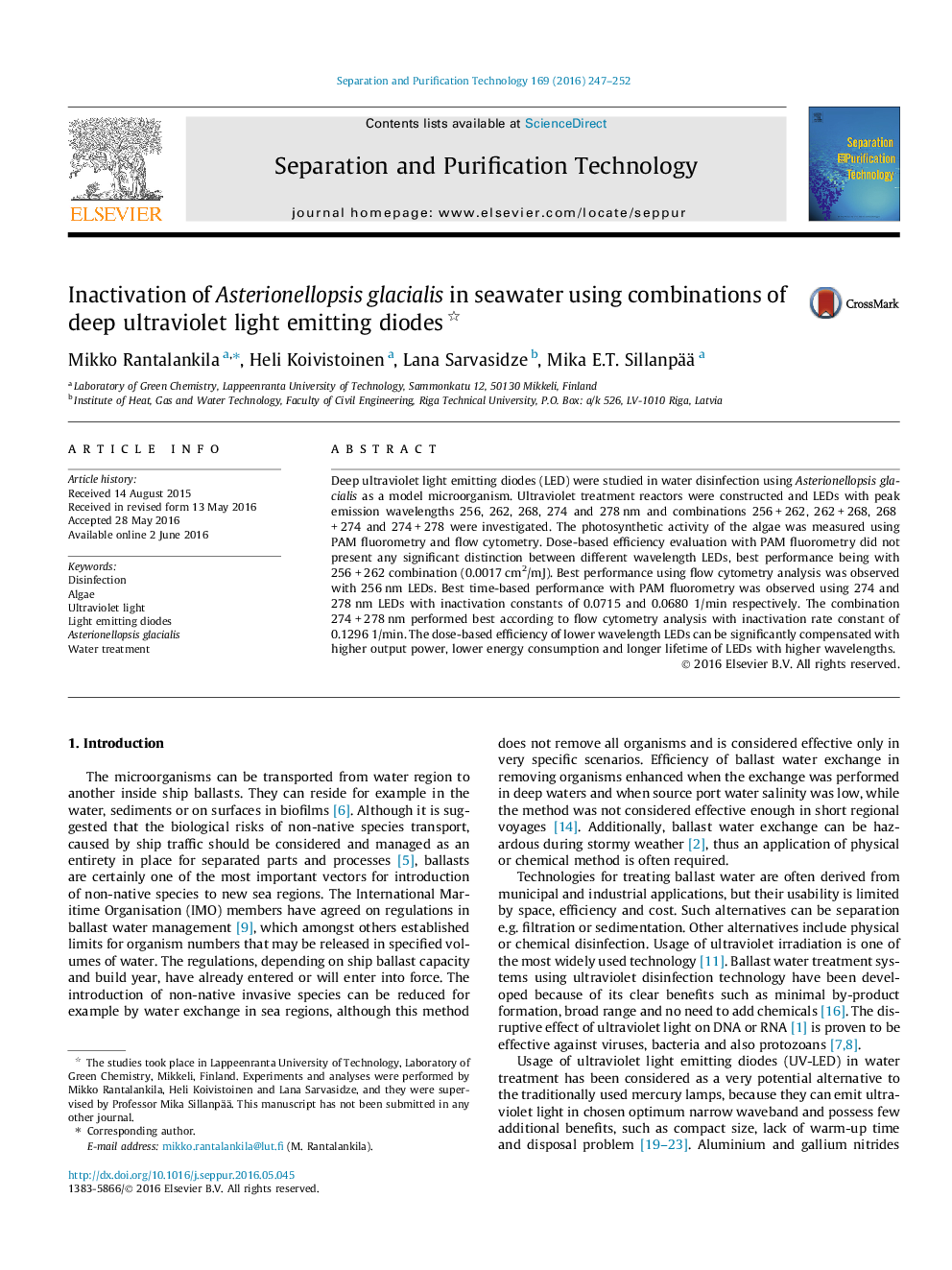| کد مقاله | کد نشریه | سال انتشار | مقاله انگلیسی | نسخه تمام متن |
|---|---|---|---|---|
| 639898 | 1456951 | 2016 | 6 صفحه PDF | دانلود رایگان |
• Best dose-based efficiency was achieved using 262 nm LEDs.
• Best time- or energy-based performance was achieved using 268, 274 and 278 nm LEDs.
• Negligible benefits were achieved using combinations of LEDs.
• Higher wavelength LEDs are preferred due to higher output and lower energy expense.
Deep ultraviolet light emitting diodes (LED) were studied in water disinfection using Asterionellopsis glacialis as a model microorganism. Ultraviolet treatment reactors were constructed and LEDs with peak emission wavelengths 256, 262, 268, 274 and 278 nm and combinations 256 + 262, 262 + 268, 268 + 274 and 274 + 278 were investigated. The photosynthetic activity of the algae was measured using PAM fluorometry and flow cytometry. Dose-based efficiency evaluation with PAM fluorometry did not present any significant distinction between different wavelength LEDs, best performance being with 256 + 262 combination (0.0017 cm2/mJ). Best performance using flow cytometry analysis was observed with 256 nm LEDs. Best time-based performance with PAM fluorometry was observed using 274 and 278 nm LEDs with inactivation constants of 0.0715 and 0.0680 1/min respectively. The combination 274 + 278 nm performed best according to flow cytometry analysis with inactivation rate constant of 0.1296 1/min. The dose-based efficiency of lower wavelength LEDs can be significantly compensated with higher output power, lower energy consumption and longer lifetime of LEDs with higher wavelengths.
Journal: Separation and Purification Technology - Volume 169, 1 September 2016, Pages 247–252
